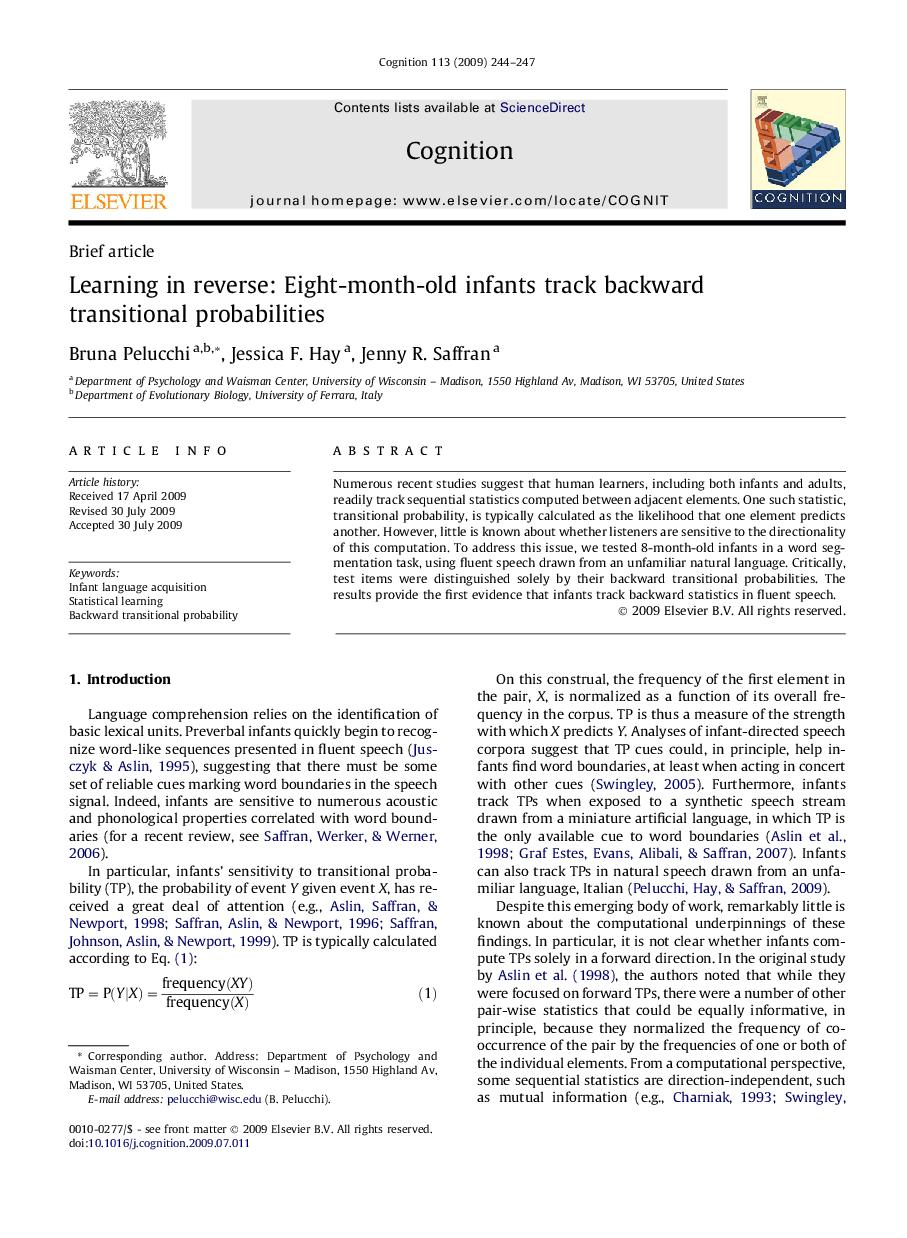| Article ID | Journal | Published Year | Pages | File Type |
|---|---|---|---|---|
| 927043 | Cognition | 2009 | 4 Pages |
Abstract
Numerous recent studies suggest that human learners, including both infants and adults, readily track sequential statistics computed between adjacent elements. One such statistic, transitional probability, is typically calculated as the likelihood that one element predicts another. However, little is known about whether listeners are sensitive to the directionality of this computation. To address this issue, we tested 8-month-old infants in a word segmentation task, using fluent speech drawn from an unfamiliar natural language. Critically, test items were distinguished solely by their backward transitional probabilities. The results provide the first evidence that infants track backward statistics in fluent speech.
Keywords
Related Topics
Life Sciences
Neuroscience
Cognitive Neuroscience
Authors
Bruna Pelucchi, Jessica F. Hay, Jenny R. Saffran,
